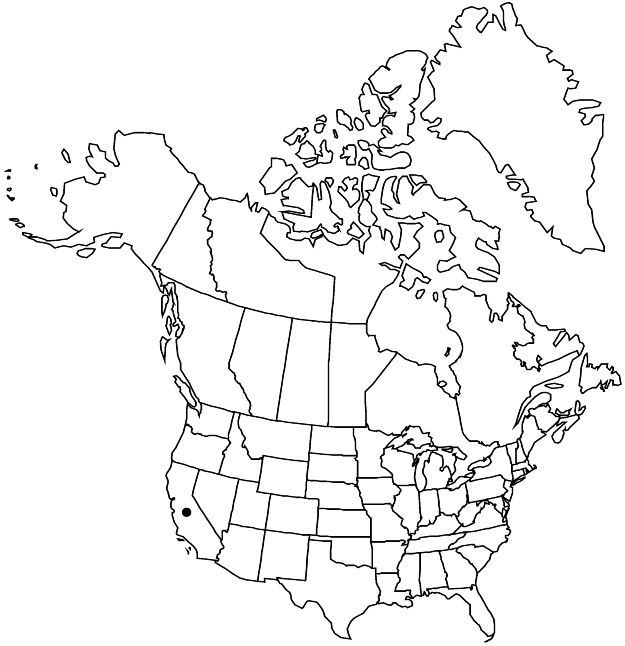Chamaebatia australis
Bull. Torrey Bot. Club 34: 263. 1907.
Plants 6–20 dm, separate, possibly colonial. Stems: internodes 2–10(–22) mm; bark gray. Leaves 2(–3)-pinnately compound; petiole 2–5 mm; blade lance-elliptic, (30–)35–55 × 10–25 mm, surfaces hirtellous, stipitate-glandular; rachises straight to decurved; pinnae 13–17 per side, oblong, 2–13 × 1.3–4 mm, each divided into 3–9 pairs of segments, ultimate segments obliquely obovoid, 0.8–1.5 × 0.4–1 mm, terminal largest, each with terminal sessile or embedded gland, rachis (rachilla) with additional segments. Inflorescences (1–)2–5-flowered, racemose corymbs, 40–65 mm; peduncles 3–15 mm. Flowers: hypanthium 3–4 mm diam.; hypanthia and sepals hirtellous, stipitate glands to 1 mm; sepals oblong, 3.5–4.5 mm; petals 5.5–6.5(–7.5) mm, apex cleft or not; stamens 35–40; styles 3.5–4 mm. Achenes 3–4 mm. 2n = 18.
Phenology: Flowering Apr–Jun.
Habitat: Dry slopes in chaparral, coarse granitic sands
Elevation: (200–)300–1000(–1200) m
Distribution

Calif., Mexico (Baja California).
Discussion
Chamaebatia australis occurs in San Diego County and adjacent northern Baja California.
Selected References
None.